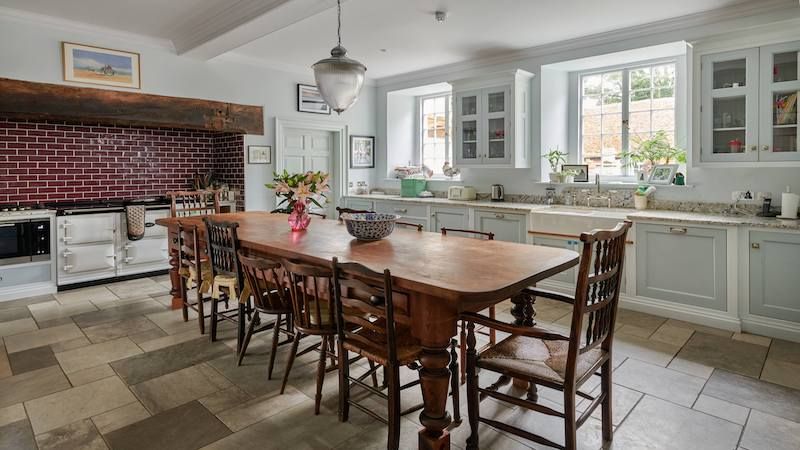
From the physical world to the virtual world
Webinar 2 - How our worlds have been turned upside down and the impact this has on moving home in the future…


Words by Fiona Pengelly
Though the charm of a period property may lie in its history, its dedication to the past can be a hindrance when looking for modern comforts. As smart technology and energy-saving sensibilities make our daily lives outside of the home easier and more sustainable, we look at ways to transform a period property without losing its historic appeal.
Heat retention and sustainability
Though older properties may have been leading the charge in terms of design in their day, they tend to be less forward-thinking when it comes to their heat retention. Often featuring stone walls, flagstone or wood floors, single pane glass and generally poor insulation, these properties can be difficult to keep warm.
Though period-style cast iron radiators and other “retro”-style fittings may be aesthetically pleasing, they might not be the best solution for problems such as heat loss. Instead, consider replacing windows (where possible with building regulations) with double glazed ones crafted in a similar style. If possible, use craftsmen familiar with older properties to update insulation, draught-proof doors and fill gaps between floorboards.
Sources of heat are also important to consider. The Aga cooker, the staple of desirable period properties everywhere, is in fact quite unsustainable in terms of oil or coal use. As it is constantly heated and is often used to power water systems in older buildings, it consumes a large amount of energy and can produce up to 35% more CO2 emissions than a standard UK home. If you own an Aga, consider replacing it with a vintage-design modern oven or even an electric Aga that can help save the environment.
To further ensure that your property is energy-efficient, you can connect your heating system to a smart thermostat that will track your heating and offer remote control of the system. Temperature can be controlled when there is no one at home, meaning energy is conserved.
Add security without compromising on style
Period properties can be less secure than modern homes, given their older locks, wooden-framed windows and other delicate features. Homeowners may be concerned that adding security measures might impact on their home’s charm, but there are ways to protect your home that fit with the aesthetic.
For example, you can install period-style smart security doors. These are bespoke, high-security doors that utilise heavy-duty materials and complex locks to ensure security is a priority. The toughened glass and reinforced timber and steel panels can be moulded to your home to fit the period style.
Hidden security cameras, motion sensors and reactive outdoor lighting can also help ease fears about safety.
These will help deter potential intruders from getting close to your home, and capture any nefarious activity that does occur.
Unobtrusive smart technology and disguised entertainment
Embedding smart features can not only give your period home a new lease of life, but can also make your general life easier.
An example is the installation of smart bulbs, such as the Philips Hue bulb or the Hive smart bulb, that allows you to remote control your lighting from an app. Homeowners can fit these into existing period lighting, and ensure that electricity is not being wasted by lights left on unnecessarily. Better still, they can also use this feature for home security; when away, the lights can be turned on and off on a programme to deter burglars.
Hidden speaker systems are just one way homeowners can add smart technology to their period property. Home entertainment can be made smart, and placed discreetly in its surroundings. For example, Sonos and Apple speakers are compact and easy to hide away in corners or alcoves; alternatively, you can have “invisible” speakers installed that are covered in their surrounding material to perfectly blend.
Disguised televisions are another modern convenience that can seem an eyesore in a property home, but they can equally be disguised. Homeowners might consider a retractable screen that can be covered and disguised as a mirror or a painting. Placed above a fireplace, nobody need know your watercolour print is actually a rather smart illusion.
In conclusion: period homes can be smart
While many of the features suggested will not require major changes to the property, structural alterations such as smart-security doors or double-glazed window panes may require permission from local authorities. Dependant on the property listing, certain structural or cosmetic changes to your home might be restricted, and could be costly to reverse if made without the right permissions.
If your property is listed, it is always best to contact your local council authority to enquire about any changes you wish to make, understanding that any restrictions will be in place to help retain the period character and historic charm of the property. However, period homes can be made smart and more energy-efficient with relative ease, in a way that does not have to ruin their old-world charm.